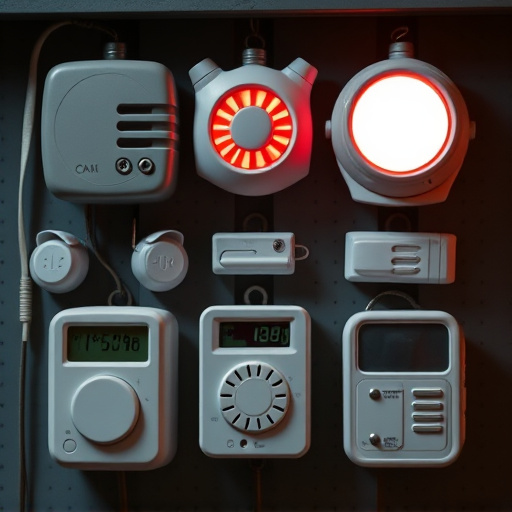Personal protection sirens, or personal alarms, are compact devices designed to deter threats and provide safety during outdoor activities. Emitting a high-decibel sound, these tools alert nearby individuals and authorities of distress in remote areas with limited emergency services. With the push of a button, users can signal for help, scaring off attackers. Ideal for hiking, camping, or running, personal alarms offer immediate protection within a specified coverage area, acting as visual and auditory warning signals to swiftly summon assistance. To select an effective personal alarm, understand the Personal Alarm Sound Coverage Area, considering factors like sound power level (SPL) and frequency. Test the siren in various environments and plan routes wisely to maximize safety during outdoor pursuits. Regular maintenance ensures reliable performance when needed.
Personal protection sirens are essential tools for outdoor enthusiasts, offering crucial safety net during adventures. This article delves into why these compact yet powerful devices are vital for navigating remote areas and enhancing personal security. We’ll explore key factors like personal alarm sound coverage area, helping you choose the right siren for your needs. Additionally, learn best practices to maximize effectiveness, ensuring peace of mind while enjoying nature’s wonders.
- Understanding Personal Protection Sirens: Why They're Essential for Outdoor Adventures
- Key Factors to Consider When Choosing a Personal Alarm with Optimal Sound Coverage Area
- Best Practices for Maximizing the Effectiveness of Your Personal Protection Siren During Outdoor Activities
Understanding Personal Protection Sirens: Why They're Essential for Outdoor Adventures
Personal protection sirens, also known as personal alarms, are compact, handheld devices designed to deter potential threats and provide crucial safety during outdoor activities. These powerful tools emit a high-decibel sound that can alert others nearby, including authorities, of your distress or location in remote areas where help may take time to arrive. The concept is simple yet effective: with the push of a button, you can signal for assistance, scaring off potential attackers and increasing your chances of safety.
In outdoor adventures like hiking, camping, or early morning runs, individuals often venture into areas with limited access to emergency services. Personal protection sirens fill this gap by offering immediate protection within a specified coverage area. The loud sound acts as a visual and auditory warning signal, ensuring that help is summoned swiftly. Whether it’s a sudden encounter with a wild animal or an unfortunate mugging attempt, these personal alarms can be life-saving tools for outdoor enthusiasts who prioritize safety without compromising their adventurous spirit.
Key Factors to Consider When Choosing a Personal Alarm with Optimal Sound Coverage Area
When selecting a personal alarm for outdoor activities, understanding the Personal Alarm Sound Coverage Area is paramount. This factor determines how effectively the siren will deter potential threats over a given radius. Key considerations include the environment’s acoustics—terrain, vegetation, and nearby structures can all affect sound projection. For instance, open fields offer better coverage than dense forests or urban areas with high buildings.
The desired range also varies based on personal needs and activities. Consider the average distance you expect to be from potential hazards. If you frequently hike in remote areas, a broader coverage area might be necessary. Conversely, for daily commutes, a shorter range could suffice. Always check product specifications for sound power level (SPL) and frequency, which directly impact hearing distance and effectiveness.
Best Practices for Maximizing the Effectiveness of Your Personal Protection Siren During Outdoor Activities
To maximize the effectiveness of your personal protection siren during outdoor activities, consider best practices such as understanding the Personal Alarm Sound and its Coverage Area. Choose a siren with a loud, distinct tone designed to attract attention quickly, ensuring it’s heard above environmental noise. Familiarize yourself with the range of the sound—while some sirens offer impressive volumes, their actual effective coverage area might be more limited than expected. Test it in various environments to confirm its reach and ensure you’re covered during your activities.
Additionally, understand the location of your siren. Carry it conveniently yet discreetly, ensuring easy access without drawing unwanted attention. Plan your routes beforehand, knowing potential hazards or areas where assistance may be needed. Regularly maintain and test your siren to ensure reliable performance when needed. Remember, a well-prepared personal alarm is crucial for enhancing safety during outdoor pursuits.
Personal protection sirens, by enhancing your outdoor safety and visibility, serve as a powerful tool for adventurers. When choosing a personal alarm, consider factors like sound coverage area to ensure optimal protection during various activities. Following best practices, such as testing and positioning the siren strategically, can maximize its effectiveness. Stay safe, stay heard—your personal alarm could be the difference between a thrilling experience and an emergency situation.
